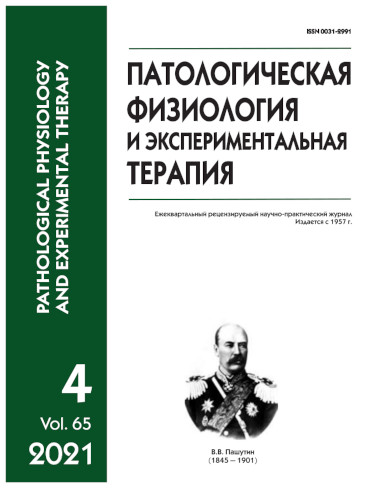Comparative effects on anticoagulant activity and degree of fibrin polymerization of extracts from the new peony "Ivan Gorozhankin" and "Paeonia lactiflora"
Abstract
Introduction. The research topic is relevant due to the problem of safely combating thrombosis and thromboembolism. Anticoagulants of various kinds, e.g., heparin-like and peptides, have been found in many plants. Aim. To investigate the possibility of synergistic effects on the blood anticoagulant and fibrinolytic activity and on processes of fibrin polymerization by an extract from the roots of the “Ivan Gorozhankin” peony compared with the root extract from “Paeonia lactiflora”. Methods. The focus of the study was the roots of the “Ivan Gorozhankin” peony and the Paeonia lactiflora growing in the Botanical Garden of the Moscow State University. The “Ivan Gorozhankin” peony was created by crossing P. lactiflora and the “medicinal” peony. Methods for obtaining extracts from the roots of various peonies have been developed. In 1%, 3%, and 5% dilutions of the extracts, the anticoagulant activity was determined according to tests characterizing the internal, external and general blood coagulation pathways, as well as by the degree of polymerization of rat blood plasma fibrin. For comparison, we used a standard preparation of low molecular weight heparin (LMWH) of animal origin (Celsus, USA). Isolation and purification of the active substances, heparinoids, were isolated from dry preparations and purified, and their activities were measured. Results. Extracts from both peony preparations had anticoagulant and total fibrinolytic activity on unstabilized fibrin, but to different extents. In the extracts from the roots of the “Ivan Gorozhankin” peony, preferential synergistic effects were noted, namely, the anticoagulant activity was higher by 20-30%, and the total fibrinolytic activity was higher by 40% compared to those of extracts from Paeonia lactiflora roots. Similar results were obtained when studying the degree of fibrin polymerization as influenced by purified peony preparations. Possible mechanisms of the activating action of the "Ivan Gorozhankin" peony extract on the anticoagulant properties of plasma, the total fibrinolytic activity, and the degree of fibrin polymerization are considered. This action is due to the inhibition of thrombin activity and factors of the internal mechanism of blood coagulation. According to the activated partial thromboplastin time (APTT) test, the anticoagulant effect of extracts from the “Ivan Gorozhankin” peony exceeded by 20-30% the activity of Paeonia lactiflora extract, which corresponded to the anticoagulant activity of the LMWH comparator drug. Using the described biochemical methods, the presence of an anticoagulant heparin-like substance in an extract from the peony "Ivan Gorozhankin" has been discovered. Conclusion. For the first time, the ability of an extract from the roots of the "Ivan Gorozhankin" peony to exhibit synergistic anticoagulant and fibrin-depolymerization effects was demonstrated. These effects exceeded those of the Paeonia lactiflora extract. Based on these data, it appears necessary to study the “Ivan Gorozhankin” peony as an antithrombotic, and possibly as an anti-atherosclerotic agent.






